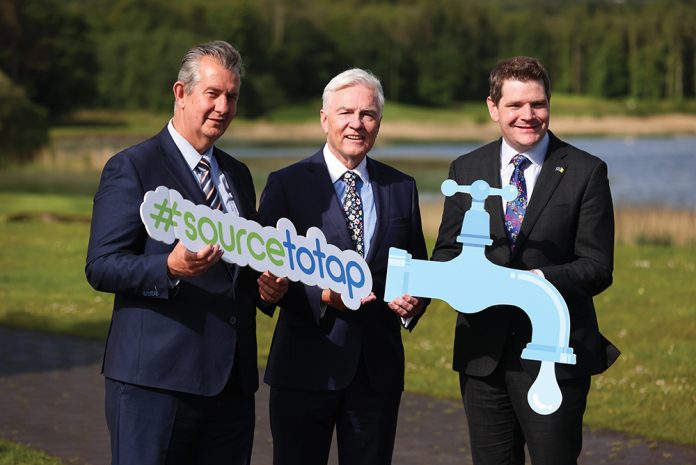Drinking water protection across Ireland has reached a ‘watershed’ moment with the culmination of five years’ work to improve river water quality.
The €4.9m Source to Tap project explored sustainable, cost-effective catchment management measures designed to protect source drinking water catchments. It also trialled techniques such as farm water protection measures and peat bog restoration, and worked on educating local communities about the journey of water from source to tap.
The cross-border project, funded under EU’s INTERREG VA programme, focused on water quality measures in the River Derg and River Erne catchment areas.
Every £1 invested in Source to Tap’s Land Incentive Scheme, including future catchment investment, saw over £3 of water quality benefits, along with improved catchment ecosystem services.
The project was funded by the EU’s INTERREG VA programme through the Special EU Programmes Body (SEUPB) together with funding from the Department for Agriculture, Environment and Rural Affairs (DAERA) in Northern Ireland and the Department for Housing, Local Government and Heritage (DHLGH) in Ireland.
Minister for Agriculture, Environment and Rural Affairs, Edwin Poots MLA, said: “I would like to congratulate the lead partner Northern Ireland Water for combining their expertise with Irish Water, the Agri-Food & Biosciences Institute, East Border Region, University of Ulster and the Rivers Trust and on the hard work in bringing and delivering this project to a successful conclusion.
“This project represents an investment in the quality of our drinking water now and into the future. Through research and new approaches to educate and inform all our citizens as well as through innovative approaches to land and water management, we can together work to deliver sustainable long-term improvements in water quality.”
NI Water’s Director of Asset Delivery, Paul Harper, added: “Many benefits have been delivered, including farm water protection measures on 118 farms in the River Derg catchment, cutting-edge catchment management science, as well as the restoration of over 20 hectares of peat bog.”



